The Western has been around for as long almost as long as cinema has been around. Since Edwin S. Porter’s The Great Train Robbery in 1903, the film regarded by many as the first, the Western cemented itself as a seminal genre in the history of movies. Throughout its years, we learned the tropes and motifs of the Western: The main character is usually a white male lead and he’s either a cowboy, an outlaw, or someone who works on a farm and is typically a tough, masculine loner. The film’s setting is out west or in the south, either in a corrupt town or the vast American plains and pastures. There are some corrupt lawmen, maybe a damsel in distress, shootouts, horses, and our hero riding off into the sunset. While there are obvious exceptions to this, these were the essential tropes of a classic Western film, and it became one of the most popular American movie genres.
However, at the turn of the century, the Western genre changed. The popularity of the genre diminished and with that came changes in the genre. While we still have some “classic” Westerns and remakes of popular ones from the 1950s and 60s, the Westerns of the 2000s looked and felt different from what we had become accustomed to with the genre. The main characters weren’t just straight white males, the gunfights were more violent and action-packed, they could take place in post-Civil War America or in contemporary times. We also saw more Black Westerns, queer Westerns, independent Westerns. The changes in the genre gave it a much-needed spark and though not as popular, we have gotten some truly great Westerns this century. These are my picks for the best Westerns of the 21st century.
3:10 to Yuma

James Mangold’s remake of Delmer Daves’s 1957 film of the same name focuses on Dan Evans (Christian Bale) a broke, small-time rancher who is hired to get outlaw Ben Wade (Russell Crowe) on the 3:10 train to Yuma while trying to evade Wade’s gang from freeing him. What elevates Mangold’s remake is the modernized action sequences which are loaded with bullets and chases and are as exciting as any 21st-century Western action sequence. The film also boasts an incredibly talented ensemble led by Bale and Crowe, in two of their best performances, and a scene-stealing Ben Foster as the psychotic quick-trigger gunman of Wade’s crew.
It isn’t often that sequels are better than the original, but Mangold keeping the core themes and story of the original while modernizing the action takes his version of 3:10 to Yuma to the next level.
The Assassination of Jesse James by the Coward Robert Ford
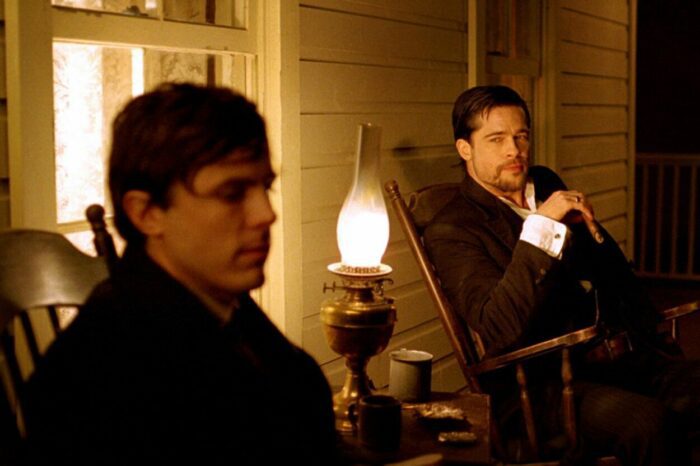
Jesse James might be the most infamous outlaw in American history and there have been several movies made about him throughout movie history. There were two films made about James in the 2000s. The first was Les Mayfield’s American Outlaws, which came out in 2001 and saw Colin Farrell as the legendary outlaw. The second was Andrew Dominik’s The Assassination of Jesse James by the Coward Robert Ford, one of the greatest Western biopics ever made.
While the film’s runtime is as long as its title, The Assassination of Jesse James by the Coward Robert Ford is extraordinary. It is a moody, epic Western that portrays the life of Jesse James (a sensational Brad Pitt), his gang, and his eventual killer (Casey Affleck, in an Oscar-nominated performance). The film takes its time to tell the story and looks deep into the history of James and the chain gang also looking at themes of fame of violence. This is also one of the most visually stunning movies I have ever seen. Shot by legendary cinematographer Roger Deakins, he used unique techniques for some of the film’s more legendary shots, particularly the jaw-dropping train-robbing sequence. This is one of the best works of Deakins’ career.
Though a box office failure and mixed critically, The Assassination of Jesse James by the Coward Robert Ford’s reputation has grown since 2007, with people not only claiming it as an all-time Western but one of the finest movies of the 21st century.
Brokeback Mountain and The Power of the Dog
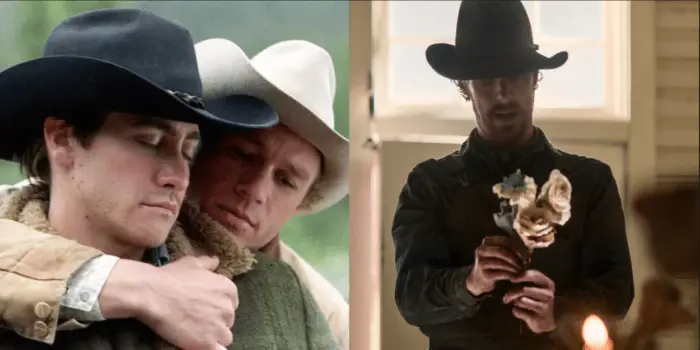
The Western genre in the 1900s was defined by guys like John Wayne, Glenn Ford, and Gary Cooper, tough, brute men who symbolized masculinity in the 1940s, 50s, and 60s and were the archetype for the lead characters in Westerns. While there were queer and queer-coded Westerns before the 2000s, the ones in the 2000s left a larger imprint on culture and were more daring in their depictions of a queer West.
The biggest and arguably most culture-shifting was Ang Lee’s 2005 film Brokeback Mountain, which focused on the forbidden love between two cowboys (Heath Ledger and Jake Gyllenhaal in iconic performances) who fell in love while sheep herding. The film was constantly mocked for being the “gay cowboy movie”, even by those who didn’t even see the movie. Yet, Brokeback Mountain is a beautiful film and a towering achievement in Lee’s filmography.
Jane Campion’s The Power of the Dog stars Benedict Cumberbatch (in a career-best performance) as Phil Burbank, a tough rancher who torments his brother’s (Jesse Plemmons) new wife (Kirsten Dunst) and son (Kodi Smit-McPhee). Cumberbatch plays a rancher much like the classic archetype. He’s tough, mean, dirty, good at what he does, and is respected as much as he is feared. Phil’s tough exterior begins to deteriorate when he starts to find love in an unexpected place. Campion slowly strips away the machismo of Phil to show a man who uses fear and intimidation to hide the secret of his sexuality.
Both films went on to win Best Director Academy Awards for Lee and Campion and arguably should have won Best Picture in their respective years.
The Harder They Fall

Jeymes Samuel made one of the most impressive directorial debuts of the 2020s with his crafty All-Black western. Inspired by actual cowboys and outlaws, the film looks at Nat Love (Jonathan Majors), an outlaw who discovers the man who killed his parents (Idris Elba) has been freed from prison and vows revenge.
Along with Majors and Elba, The Harder They Fall features a who’s who of Black actors, like Regina King, LaKeith Stanfield, Zazie Beats, RJ Cyler, Delroy Lindo, and many others. The setting, characters, and storyline feel very much like a traditional Western, but Samuel’s usage of a hip-hop-heavy soundtrack, treatment of his women characters, and his kinetic, violent set pieces, add a fresh vision to make the film feel unique from other Westerns.
Most importantly, The Harder They Fall shines a light on real-life Black cowboys and outlaws, something that we have rarely seen in movies up to this point despite there being several Black cowboys dating back to the 1800s.
No Country for Old Men, True Grit, and The Ballad of Buster Scruggs
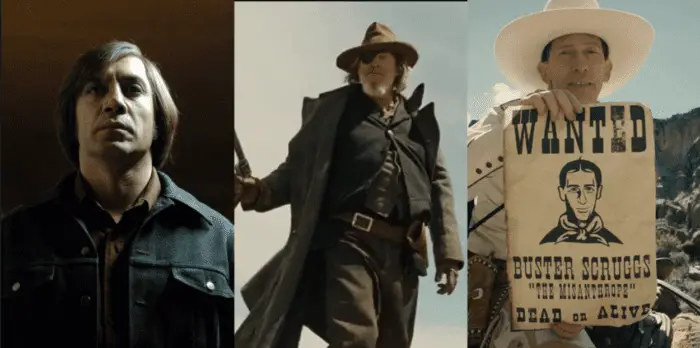
It would be impossible to talk about 21st-century Westers without talking about Joel and Ethan Coen. While the brothers put together a diverse and brilliant filmography this century where they saw critical and financial success along with winning countless awards, they are also responsible for three of the best Westerns of this century and maybe of all time. 2007’s No Country for Old Men is a contemporary Western based on Cormac McCarthy’s novel that earned the Coen Brothers Oscar wins for Best Picture, Best Director, and Best Adapted Screenplay. 2010’s True Grit is a remake of Henry Hathaway’s 1969 film that is the Coen Brothers‘ most successful film at the box office and earned ten Oscar nominations. Then there’s The Ballad of Buster Scruggs, an anthology Western film that tells four different stories set in the Old West and features a great ensemble cast.
What’s most impressive about this run of films is, besides all being great films featuring first-class performances and top-tier Coen writing and direction, is how the Coen Brothers flexed their creativity and gave us three different kinds of Westers. No Country for Old Men is a contemporary Western adapted from an iconic book. True Grit is a revisionist Western while still featuring many of the classic Western tropes and characters. The Ballad of Buster Scruggs is the greatest anthology Western film ever made and features original segments written by the Coens as well as adapted ones. The three films showed the Coen Brothers’ understanding of the genre, its evolution throughout the years, and that they are some of the best filmmakers in the world.
Open Range

Kevin Costner directed and stars as a former gunslinger who is forced back into action when he and his cattle crew are threatened by a corrupt lawman. Costner co-stars in the film with Robert Duvall, Annette Benning, and Michael Gambon.
Throughout the 2000s, a lot of Westerns subverted the genre, giving us new stories and elevating the way these movies were made. Open Range is an old-school Western in every sense. It feels like a film that could have been made in 1953, 1983, or 2003. It’s what you think about when you think of Westerns. It’s cowboys, a corrupt town, an old gunslinger, a damsel, and shootouts.
With great chemistry between Costner and Duvall, gorgeous cinematography, a sweeping score, and intense, realistic shootouts, Open Range showed that while the genre is changing, there is still room for classic stories and classic characters.
Rango
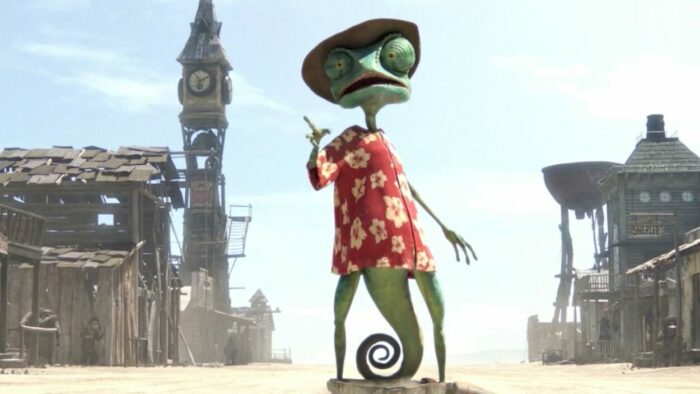
There aren’t too many animated Westerns. When they think of an animated Western, some might think An American Tale, Spirit: Stallion of Cimarron, or even Puss in Boots. However, there is one animated Western that stands head-and-shoulders above the rest and that is Gore Verbinski’s Rango, an energetic and entertaining film about a loner who ends up becoming the hero of a lawless town in desperate need of water
Of course, that loner is a chameleon (wonderfully voiced by Johnny Depp) and the lawless town is filled with other creatures like armadillos, iguanas, Gila monsters, a gun-slinging rattlesnake, and a vicious hawk. The animation style is unique and fun and Rango hits a lot of classic Western tropes while paying homage to the genre.
The Rider
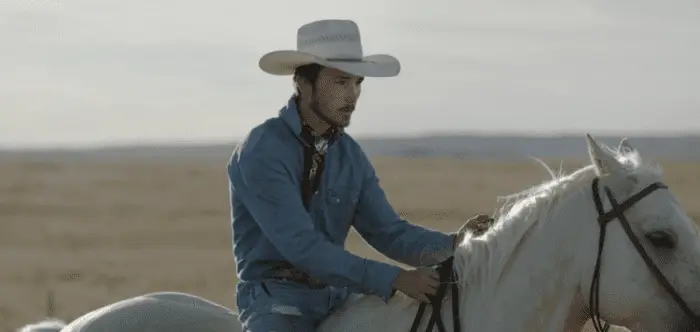
Chloe Zhao’s sophomore film is a beautiful and heartbreaking Western that looks at a rodeo cowboy (Brady Jandreau) trying to figure out his life after suffering an injury that forces him to stop riding. The film consists of Lakota Sioux actors from the Pine Ridge Reservation playing fictionalized versions of themselves. The film’s story is based on the main actor’s real-life experience of getting injured while riding a bucking horse.
Like a lot of Zhao’s early work, including her Oscar-winning Nomadland, The Rider blurs the line between fiction and reality and at times feels like we are watching a documentary about Brady, his family, and his journey. Zhao’s screenplay is a mix of her own inventions and real dialog she heard Brady and others say while she was doing her research. Zhao’s authentic filmmaking makes The Rider a one-of-a-kind Western.



